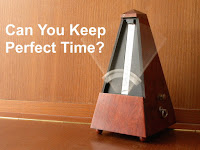 Taylor Swift's "You Belong With Me" was not only a worldwide hit, but also garnered nominations for Song of the Year, Record of the Year and Best Female Pop Vocal Performance at the 2009 Grammy Awards. Here are the isolated vocals from the song and a few things to listen for.
Taylor Swift's "You Belong With Me" was not only a worldwide hit, but also garnered nominations for Song of the Year, Record of the Year and Best Female Pop Vocal Performance at the 2009 Grammy Awards. Here are the isolated vocals from the song and a few things to listen for.1. The vocal in the 1st verse seems very close to you because the medium delayed reverb is dialed back a bit compared to the rest of the song. There's also what sounds like a 1/4 note delay that blends seamlessly into the track except for certain phrases where it's emphasized.
2. At the end of the 2nd verse there's a delay hard panned left and right as an effect.
3. Listen for the solo vocal counterpoint line only on the right side during the bridge, as well as the hard panned effect at end.
4. The vocal is very compressed, but you don't hear the compressor working for the most part.
5. A lot of breaths are left in the track, especially in the first verse, to up the emotion in the song.







